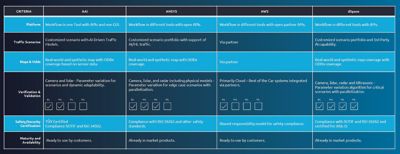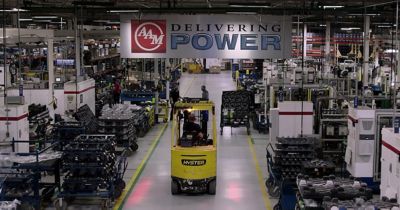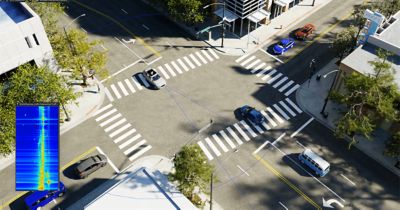-
-
Access Free Student Software
Ansys empowers the next generation of engineers
Students get free access to world-class simulation software.
-
Connect with Ansys Now!
Design your future
Connect with Ansys to explore how simulation can power your next breakthrough.
Countries & Regions
Free Trials
Products & Services
Learn
About
Back
Products & Services
Back
Learn
Ansys empowers the next generation of engineers
Students get free access to world-class simulation software.
Back
About
Design your future
Connect with Ansys to explore how simulation can power your next breakthrough.
Free Trials

The introduction of advanced driver-assistance systems (ADAS) and automated driving (AD) has accelerated the evolution of the automotive sector. ADAS and AD innovations have the potential to improve the safety of vehicles, enhance comfort while driving, and make traffic more efficient. Nevertheless, designing and deploying these systems is challenging. Regulatory processes such as homologation, which check if permissible standards are met on a vehicle, are based on extensive real-world simulations. This is not only expensive and lengthy, but it is also becoming unfeasible due to the myriad of conditions that need to be created and tested for the ADAS and AD systems.
This challenge has led to the rise of the idea of digital homologation. Digital homologation utilizes powerful simulation systems to validate assumptions about ADAS and AD technologies in a virtual world. These processes aid in the ADAS and AD system validations without the costs that traditionally emerge from spending on testing environments. By virtually testing many driving conditions and situations, these systems can be guaranteed to function appropriately, meet regulatory standards, and respond accurately in the real world.
The white paper "Enabling Digital Homologation with Advanced AD Simulation Ecosystems" by Capgemini explores this transformative approach. It discusses the benefits of digital homologation, the technological advancements that make it possible, and the collaborative efforts required to implement it successfully. The paper also highlights insights from key industry players, including hyperscalers, tool providers, emerging innovators, and Tier 1 suppliers, who are at the forefront of this technological shift.
Additionally, Capgemini provides an in-depth look at the capabilities of Ansys in the context of digital homologation for ADAS and AD systems.
Comprehensive Simulation Capabilities
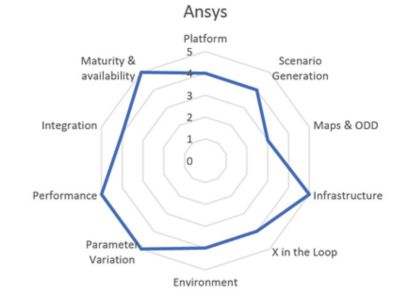
Results of the Capgemini study on advanced driver-assistance systems (ADAS) and automated driving (AD) included key differentiators among tool providers like Ansys. Image courtesy of Capgemini.
- High-fidelity simulations: Ansys offers advanced simulation tools that deliver high-fidelity physics-based results. These tools accurately model a wide range of physical phenomena, crucial for simulating complex driving scenarios. This ensures that the simulation outcomes are as reliable as physical testing, boosting confidence in the performance and safety of ADAS and AD systems.
- Scenario coverage: The simulation tools cover many different driving conditions and scenarios, including extreme weather, diverse road types, and various traffic situations. This comprehensive coverage is essential for thorough validation and homologation.
Integrated Workflow
- Holistic approach: Ansys provides an integrated workflow that combines safety analysis, real-world scenario acquisition, and the creation of intricate digital models. This holistic approach ensures that all aspects of the AD stack, from sensors to control algorithms, are thoroughly tested and validated in a virtual environment.
- Seamless integration: The tools are designed to integrate seamlessly with existing infrastructure, facilitating cross-functional collaboration and ensuring a cohesive simulation ecosystem that supports the entire product life cycle.
Automated Compliance Management
- Real-time tracking: Ansys's collaboration with Kontrol enables real-time tracking of regulatory changes. This ensures that the development process remains compliant with evolving safety standards and regulatory requirements.
- Continuous compliance: The automated compliance management system continuously monitors and updates compliance status throughout every stage of development, reducing the risk of noncompliance and ensuring that the final product meets all necessary regulations.
Digital Twin Technology:
- Virtual validation: Ansys's digital twin technology creates a digital replica of physical assets, enabling virtual validation of software and systems. This technology enables continuous monitoring and optimization of performance in real time, providing valuable insights into the behavior of ADAS and AD systems under different conditions.
- Predictive maintenance: The digital twin can also be used for predictive maintenance, identifying potential issues before they become critical and ensuring the reliability and safety of the systems.
Cloud-based Collaboration
- Scalability: Powered by Microsoft Azure, Ansys's platform supports seamless collaboration and scalability. The cloud-based approach provides the computational power needed to handle complex simulations and large datasets, enabling faster and more efficient validation processes.
- AI-driven analytics: The integration of AI-driven analytics enhances simulation capabilities, providing deeper insights and more accurate predictions. This is critical for the rapid validation and homologation of ADAS and AD systems.
Industry Collaboration
- Partnerships: Ansys collaborates with key industry players, including hyperscalers, tool providers, and certification bodies, to streamline safety, certification, and virtual homologation processes. These partnerships ensure that Ansys' solutions are aligned with industry standards and best practices.
- Ecosystem support: Collaborative efforts help create a robust ecosystem that supports innovation and the adoption of advanced simulation technologies across the automotive industry.
User-friendly Interface and Support
- Ease of use: Ansys offers a user-friendly interface that simplifies simulation tool adoption and utilization. This ease of use is a significant advantage, especially for engineers and developers who need to quickly integrate these tools into their workflows.
- Extensive support: Ansys provides extensive support resources, including training, documentation, and customer service, ensuring that users can effectively leverage the full capabilities of their simulation tools.
These expanded capabilities highlight Ansys' strengths in supporting the digital homologation of ADAS and AD technologies, positioning it as a leader in the field of advanced simulation solutions.
Ansys Solutions Help Engineers Solve Today’s ADAS Challenges
Ansys AVxcelerate solutions offer an open architecture that integrates effortlessly into existing customer toolchains, making them a versatile choice for ADAS development. Supporting open standards like ASAM ensures compatibility with a variety of simulation tools and driving simulators, including IPG Automotive CarMaker and Carla. This adaptability enables developers to seamlessly incorporate AVxcelerate software into their workflows, enhancing the testing and validation processes for ADAS and autonomous driving systems. The platform's modular design and extensive APIs facilitate easy customization and automation, boosting efficiency and scalability. Furthermore, AVxcelerate software provides realistic, sensor-accurate synthetic data, enabling comprehensive scenario testing that is essential for ensuring the safety and reliability of ADAS ecosystems.
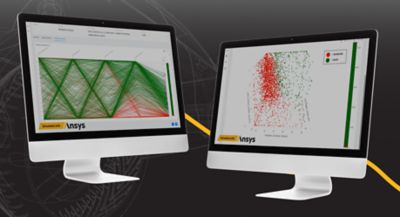
Reliability analysis inside Ansys AVxcelerate Autonomy software
Further, the paper details the benefits of homologation for the entire ecosystem of manufacturers and suppliers. For starters, there are savings in time and cost due to the reduced focus on physical testing. This efficiency also enables better validation of both ADAS and AD systems. Digital homologation of these vehicle systems ensures compliance with locally established regulations, enabling rapid deployment to new markets. In addition, collaboration within the industry, including among hyperscalers, tools vendors, and Tier 1 suppliers, fosters innovation and the adoption of new techniques in advanced simulations.
These issues are why original equipment manufacturers (OEMs) that sponsor digital homologation can rename the processes of their outcropping competitors, speed up innovation cycles, and ultimately remain relevant in the fast-changing world. Finally, with the increasing complex range of scenarios that need to be simulated, the need for efficiency in self-driving vehicles makes digital homologation the most robust, cost-effective, and efficient solution compared to the traditional techniques.
Read the full white paper “Enabling Digital Homologation with Advanced AD Simulation Ecosystems” for an in-depth analysis of all platforms that facilitate homologation and benefit the automotive industry.
The Advantage Blog
The Ansys Advantage blog, featuring contributions from Ansys and other technology experts, keeps you updated on how Ansys simulation is powering innovation that drives human advancement.
